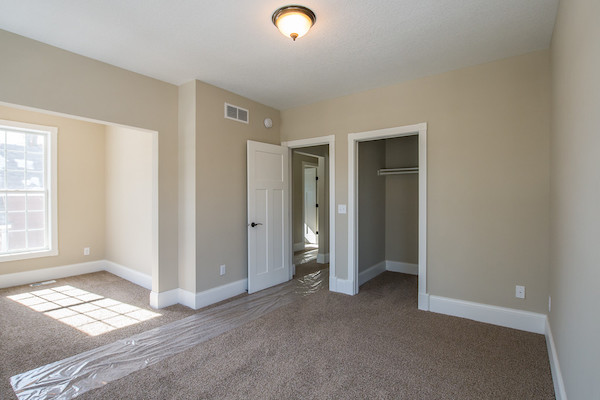
If you notice cracks around your home, you may be having some foundation problems. This is a very dangerous situation because if your foundation is cracking, sinking, or shifting, it puts your whole house at risk of collapse. So routinely check for any brick walls or chimney cracks, drywall fractures, and always look in your basement to see what your foundation is doing down there. If you notice any problems it’s best to address the situation immediately because there are solutions available, the most common being the installation of wall anchors.
Midwestern Moisture
Often in the Midwest, since the water table is high and the ground is usually saturated with rain and snow, foundation problems can occur. Underground water seeps next to your foundation, forms pressure, and eventually finds a way to leak through any porous, concrete material. This water absorption will, in turn, crack or bow foundations especially in older houses constructed of concrete-block (it has several weak points that water can easily penetrate). However, this doesn’t just apply to the Midwest. If downspouts aren’t properly placed, if gutters aren’t cleaned, or if your walls aren’t routinely examined, you may still be putting yourself at risk. But if you do find damage, don’t panic: there are affordable solutions out there.
Anchored Walls
In the past, foundation cracks meant you had to invest in some serious repair methods. You had to dig around your foundation and build new basement walls, which was expensive, labor-intensive, and took up a lot of time. But now there is an easier method to save your home’s support system: anchored walls.
- How They Work: Contractors still excavate outside your house, but now they simply dig several holes, by hand, a safe distance away from your house (often they can work around pre-existing decks or landscaping). Inside the basement they drill several small holes (usually a few yards apart) into the foundation; then they drill a long pipe (an anchor rod) through each one. These rods slide almost all the way through the wall, reaching several feet into the earth. Next, they install two metal plates onto the pipe: one plate rests against the interior wall and the other against the exterior, creating a brace. Inside, a lug nut is then placed onto the exposed piping and tightened against the interior plate, literally squeezing the wall back into place. Finally, the outside holes are backfilled and the sod is replaced, allowing the whole process to take less than a day.
- Digout: An anchored wall is great for bowed foundations: the bend is straightened and forever held in place against exterior water pressure. But if you have more serious damage, like a caved foundation, wall anchors can still fix the problem. The installation is more involved because a digout will be performed with a backhoe. All the dirt is removed from the foundation and more torque is applied to straighten the structure before installing the wall anchors. Though a bit more expensive, since you’re correcting the problem without adding new construction, it’s still the most cost-effective repair.
Ready to start your anchored wall?
Find Pros- The Big Wrench: After installation, the only maintenance that needs to be performed is tightening the brace plates. You’ll be given a large wrench and once a month you’ll be required to give each interior plate’s lug nut a good twist to maintain the straightened structure. It’s a good idea to keep this customized wrench hanging on a nearby wall-stud for easy access. And find a way to remind yourself every month: write it on a calendar, do it the same day the mortgage is due, or program a computer with a monthly update.
- Guarantees: Most anchored wall companies give you a lifetime warranty for their work, depending on the job. If they don’t mention any kind of guarantee, you should seek a different contractor. Or, for insurance reasons, you may then want to keep a running log (with corroborating dated photographs) of you tightening the interior plates once a month to prove that you’ve been regularly maintaining your foundation’s structure.
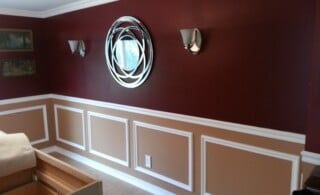 Decorative Moldings: The Perfect Cover-up
Decorative Moldings: The Perfect Cover-up  Wood Veneer: An Upside to Being Shallow
Wood Veneer: An Upside to Being Shallow 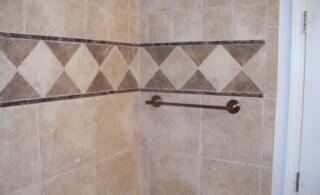 The Basics of Ceramic Wall Tile Installation
The Basics of Ceramic Wall Tile Installation 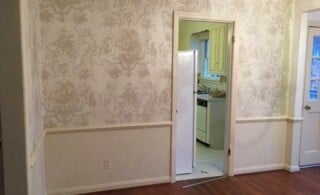 Wallpaper Prep
Wallpaper Prep 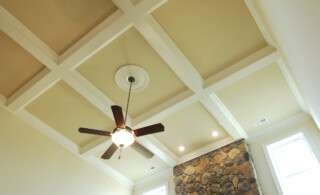 Coffered Ceilings Add Value to Home
Coffered Ceilings Add Value to Home 

Are You Familiar With This Topic? Share Your Experience.